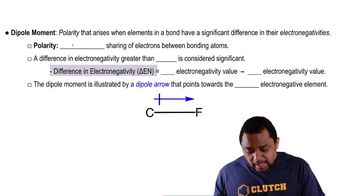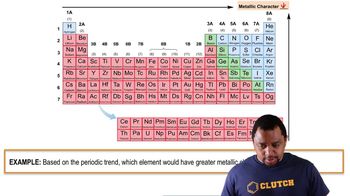Here are the essential concepts you must grasp in order to answer the question correctly.
Lewis Structures
Lewis structures are diagrams that represent the bonding between atoms in a molecule and the lone pairs of electrons that may exist. They use dots to represent valence electrons and lines to indicate bonds between atoms. Understanding how to draw Lewis structures is essential for visualizing molecular geometry and predicting the behavior of molecules in chemical reactions.
Recommended video:
Lewis Dot Structures: Ions
Dipole Moment
A dipole moment is a measure of the separation of positive and negative charges in a molecule, indicating its polarity. It is represented by an arrow pointing from the positive end to the negative end of the molecule. The presence of a dipole moment affects the physical properties of substances, such as solubility and boiling point, and is crucial for understanding molecular interactions.
Recommended video:
Percent Ionic Character
Percent ionic character quantifies the degree to which a bond between two atoms exhibits ionic characteristics, as opposed to covalent characteristics. It is determined by the difference in electronegativity between the bonded atoms; a larger difference indicates a higher ionic character. This concept helps in predicting the behavior of compounds in various chemical contexts, including reactivity and solubility.
Recommended video:
Metallic Character Example
 Verified step by step guidance
Verified step by step guidance


